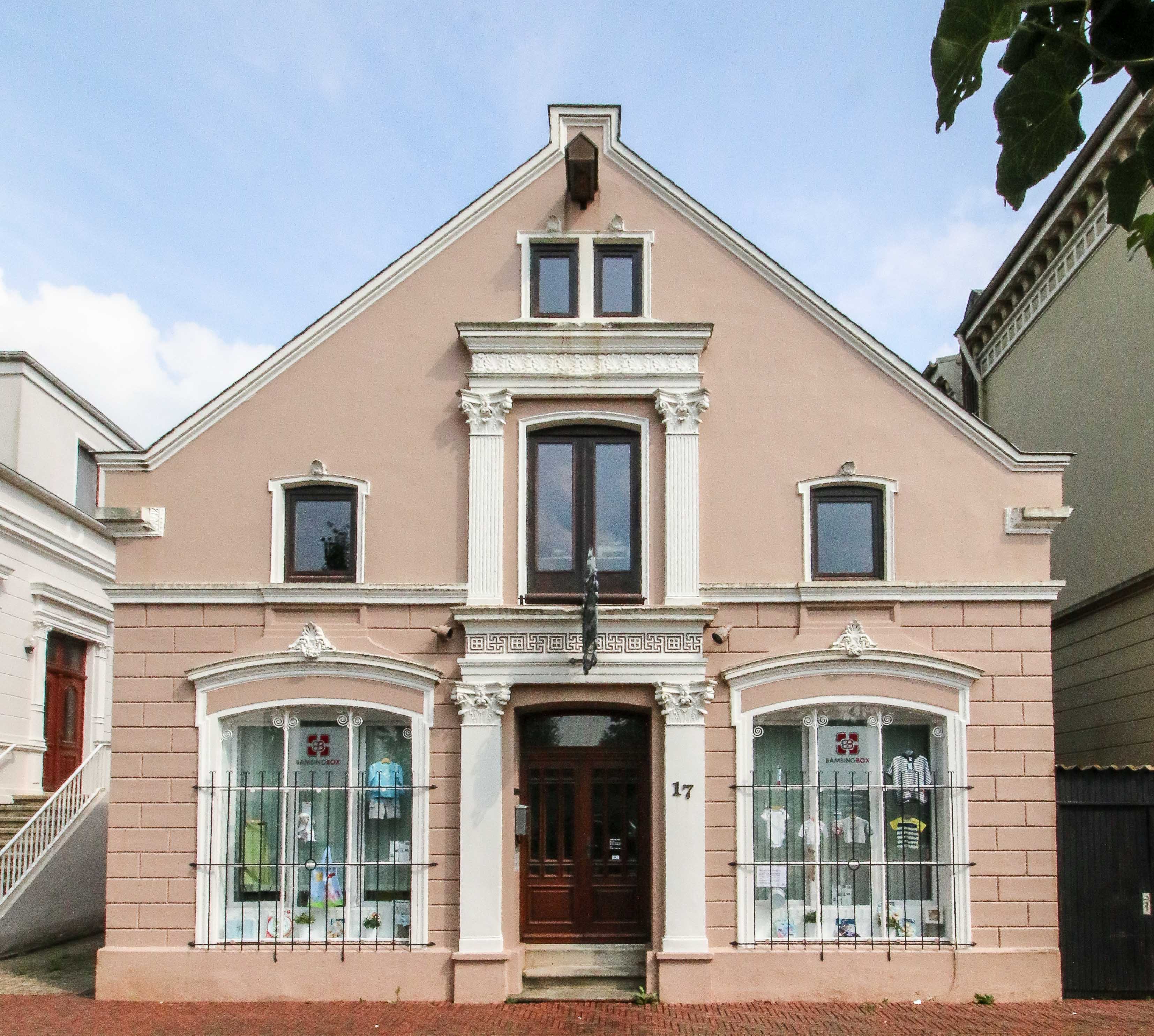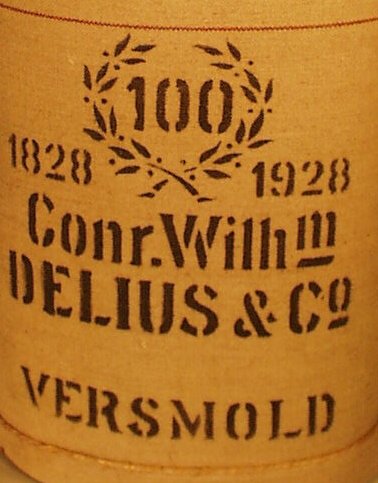
Bewerten
f943fcb7-6552-4b5c-94c2-14c84aec3d49|0|.0|96d5b379-7e1d-4dac-a6ba-1e50db561b04
The street Lindenstrasse was founded in 1798, comprising the second section between the streets Breite Strasse and Mitteldeichstrasse towards the inland harbor. However, it was first built up as of 1850. In 1874, the residential house, the workshop and the warehouse of the sailmaking company "Segelmacherei Block" was built. Even today, the sign continues to make reference to the original function of the site. Indeed, in this very location, the in part formidable sails for the brigs, barques and fully-rigged ships of Brake were cut on the drawing floor beneath the ceilings and seamed together in the workshop. The load roller beneath the gable facilitated the transport of the heavy canvasses and other materials. Currently, the house serves as an example of a typical craftsman´s house in Brake towards the late 19th Century.
The Tasks of the Sailmaker
 Lindenstr. around 1900
Many hands were involved in the construction of a ship, including the sailmakers. Core material, sailmaking bank with tools and rigging. Utilizing three rather inconspicuous items, the sailmaker created the natural “propulsion” of sailing ships. Accuracy was a decisive factor in creating effective sails and in thus guaranteeing the speed and the economic value of a vessel.
Lindenstr. around 1900
Many hands were involved in the construction of a ship, including the sailmakers. Core material, sailmaking bank with tools and rigging. Utilizing three rather inconspicuous items, the sailmaker created the natural “propulsion” of sailing ships. Accuracy was a decisive factor in creating effective sails and in thus guaranteeing the speed and the economic value of a vessel.
The sails for barques, brigs and fully-rigged ships were cut fro the individual strips of the so-called core material. Moreover, the sailmaker also produced hammocks, life vests, sacks and clothing. The typical working materials of a sailmaker can be seen in the second story in "Haus Borgstede & Becker" of the Maritime Museum.
High Space Requirements
A barque of average size had a sail area of approximately 1600 square meters. Moreover, the figure did not include the necessary reserve sails. On the drawing floor, located beneath the roof of the house in the street Lindenstrasse 17, the contours of the future sails were used as a blueprint for the customized cutting. The so-called “sail plan” was marked with chalk or strings in compliance with the specifications of the customer on the floor. The sails were then cut accordingly. Thereby, the subsequent pressure had to be taken into consideration, the climatic conditions as well. To what extent would the sails shrink or expand at sea?
 A sailmaker at work
A sailmaker at work
around 1970
Originally, sails were made of sturdy canvas or cotton. The core materials were strengthened by tanning agents and grease in order to protect them against rain and salt water. Following this fundamental work step, implemented in accordance with long years of experience, the sailmaker sewed the separately cut pieces auf der sailmaking bank together and integrated borders and fastenings such as eyes, thimbles, reef cringles and bolt ropes.
Functional Construction
Even today, the facade of the building of the Sailmaker Block provides some insight into the former working methods of the sailmaker. The wide load roller beneath the upper window facilitated the transport of the main sheet along and ultimately from the drawing floor. Even the pulley with loading door has been maintained in good condition, the heavy sails were once heaved with this object.
The house is a typical craftsman´s house of the era. The plastered facade has been maintained in the classical stucco-work style. The windows are positioned beneath implied arches which themselves are decorated (segment or archivolts). The former rungs of the display window on the ground floor are enhanced by iron ornaments.
Experiences in the museum
Originally, sails were made from strong linen or cotton. Those were made resistant to rain and saltwater using tanning agents and fats. You can find a "Kerntuchrolle" from the Delius company, sailmaker’s tools and a sail plan at "Haus Borgstede & Becker". A sailmaker’s bench can be seen in the Telegraph.
Maritime Museum - "Haus Borgstede & Becker", Breite Straße 9, 26919 Brake - 2nd floor
Maritime Museum - Telegraph, Kaje 8, 26919 Brake - 3rd floor
